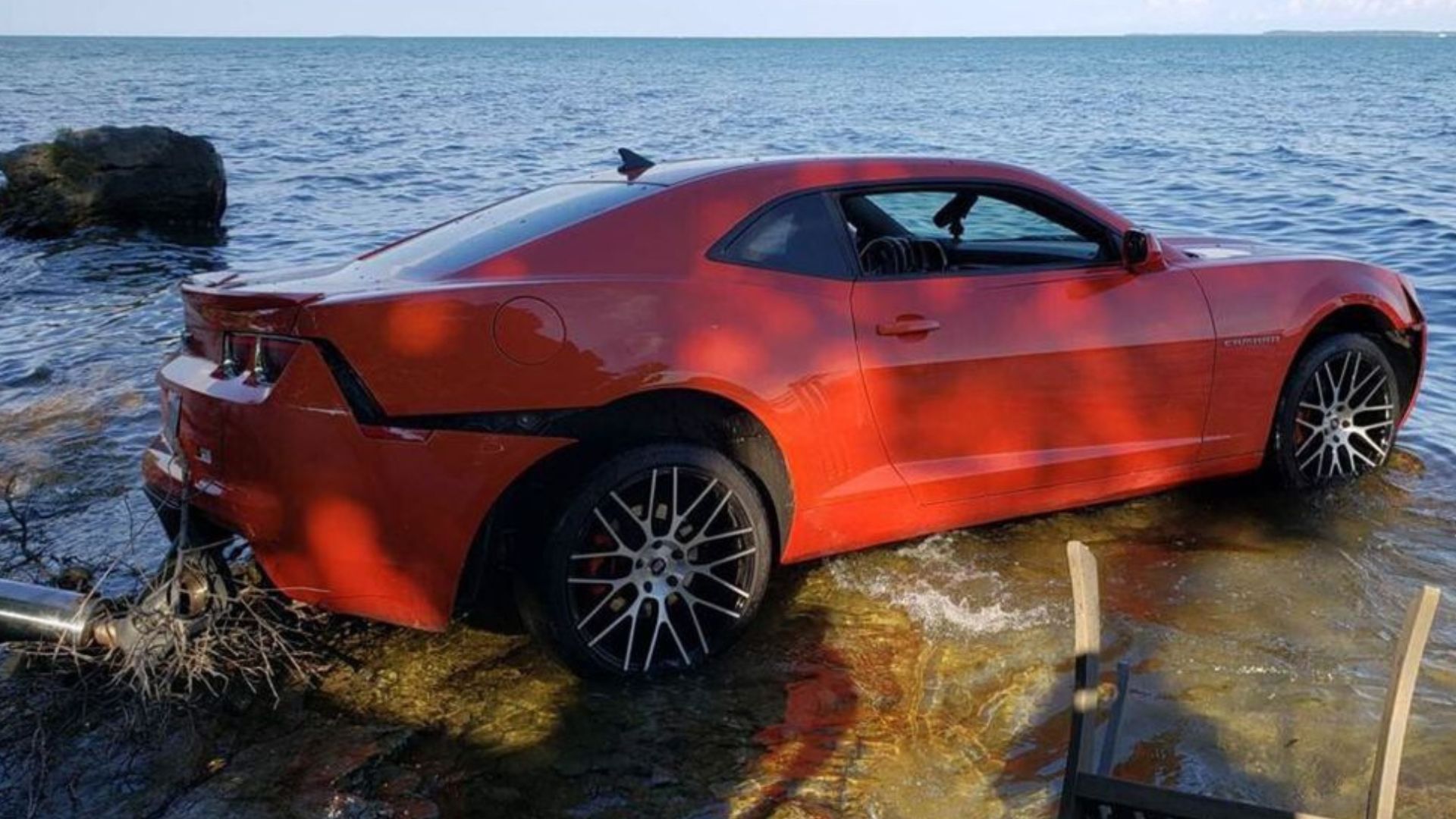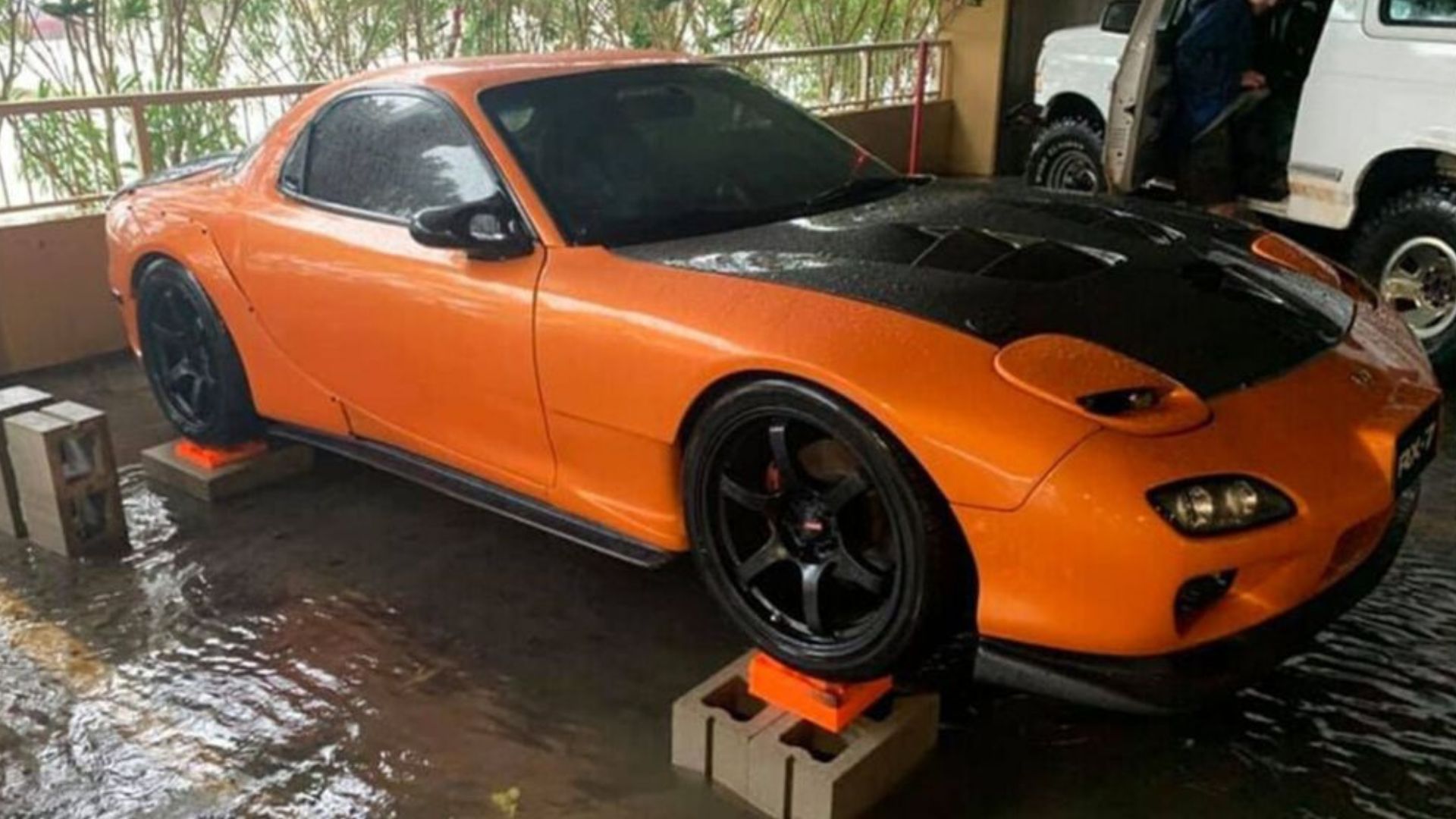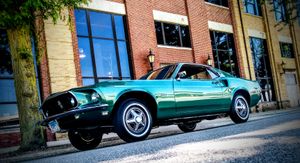Don’t get suckered into buying one of these messes!
After every flooding disaster there’s always a flood (pun intended) of water-damaged cars on the used market. With big portions of California affected by a deluge, you can expect to start seeing flood-damaged cars in your market before too long. If you want to buy a car which was underwater for whatever period of time and know that’s what you’re getting, great. What’s worse is some people buy these vehicles without knowing they were submersed for hours or even days in murky waters.
See how a Kentucky car collection miraculously escaped flooding here.
A flood damaged car can have all kinds of problems ranging from rust to mechanical issues. This is why unless you want to do extensive work to one, you should probably stay away from these rides.
One telltale sign a car has been in a flood is a musty smell. Sellers might try covering this up with air fresheners, but if you get your nose right by the carpet and take a big whiff, you’ll probably smell it. Also, turn on the heater then the AC to see if a musty/moldy smell comes pouring out of the vents.

While you’re checking out the carpets, pay attention to any discoloration. For example, if the upper and lower carpeting or upholstery don’t entirely match, that might be from a hasty replacement job after a flood.
Watch for sand or silty dirt sitting in the nooks and crannies of a car. Sellers might detail the interior to try getting rid of any signs it was in a flood, but they’re going to miss spots like between the seats and center console, under the edge of a floormat, in the glovebox, door pockets, or even under some of the seats. You might find dirt or sand accumulated in some parts of the trunk or engine compartment.
Beaded moisture is another potential sign of a car that’s been flooded. This typically shows up in exterior or interior lights, but it can also manifest in instrument panels, clocks, etc. Look in the spare wheel well for moisture, too.
Weird noises from different systems in the car, like the brakes or the steering column could also indicate flooding. Small bits of sand or dirt trapped in the mechanical components will produce screeching or other sounds you normally wouldn’t hear. Also, watching for smoke pouring out of the tailpipe, which would mean the vehicle wouldn’t pass emissions anyone but also can indicate flood damage.

Of course, one of the best ways to detect flood damage on any ride is to look for unusual rust. If the car is newer and especially if it’s out of California where roads aren’t salted in the winter, the undercarriage should be pretty much corrosion free. Also, pay attention to rusty fasteners in the interior like underneath the dash as well as in the trunk and engine compartment.
Finally, you would hope the vehicle’s title is branded from the flood damage, however when the title is switched to a new state that might not be the case. Crafty sellers might even know how to manipulate the system to “wash” the title. You can check the vehicle history through a service, although we’ve shown how those aren’t always entirely accurate. Alternatively, you can use the National Insurance Crime Bureau’s VINCheck service or the US Department of Justice National Motor Vehicle Title Information System.
If you’re still suspicious that something about a car isn’t right, walk away from the deal. Some used car peddlers can be incredibly crafty and they know everything listed above, so if things just don’t feel right it’s okay to trust your gut.
Images via YouTube





